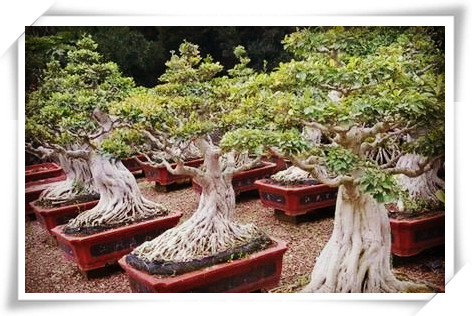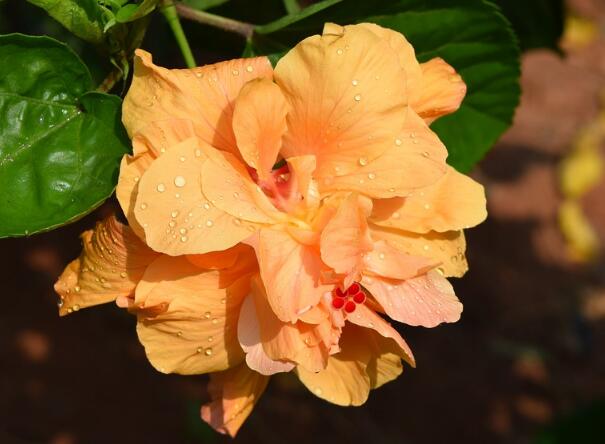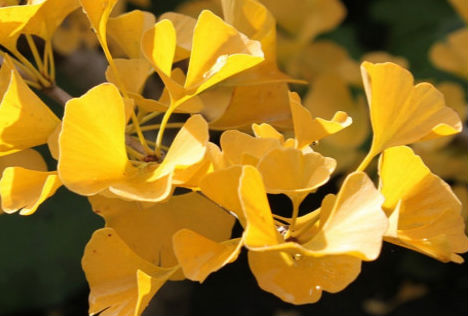Tropical woody plants are typical representatives of banyan bonsai. How to keep them sturdy?
Banyan is a typical representative of tropical woody plants. It is a good tree species for greening because of its rapid growth, long life, large crown and few insect pests. The Jin people wrote in the Southern plants: Banyan leaves such as hemp, such as holly, trunk Panqu, its shade ten mu, the old people to rest; and branch entries mouth numerous, leaves and lush thin, soft strips such as rattan, hanging gradually into the ground, vines a little artificial, then rooting nodes, or a large plant, with four or five roots, and transverse branches and adjacent trees. It can be seen that banyan trees are easy to plant, easy to live and easy to cultivate. So how to raise banyan bonsai to be stout?

1. Soil selection
Banyan trees like a sunny, well-ventilated, warm and humid environment. When the summer weather is hot, it should be properly shaded, and often sprinkle water to the ground to maintain a certain degree of humidity in the microclimate. In the north, in late autumn or early winter, banyan bonsai should be moved indoors to survive the winter.
2. Lighting requirements
Banyan trees like sunny, warm, moist and ventilated places, which can be properly shaded when the summer weather is hot. In the northern winter, it is necessary to move indoors to survive the winter, and the room temperature is about 8 ℃. Banyan tree is not afraid of the sun, but also quite shady, long-term indoor furnishings, leaves will not be yellow, winter should let it see more sunshine.
3. Fertilization method
In the growing season, the rotten and thin organic liquid fertilizer is applied once a month, and the "alum fertilizer water" is applied in May and August every year. Don't apply too much fertilizer to banyan trees. Fat branches grow, but the leaves are not beautiful when they are bigger. Do not apply fertilizer in hot summer and winter.
Because the banyan tree grows fast, it can be fertilized outside the root once a day after normal growth, using mature human and animal urine or compost as topdressing, and bottom fertilizer can also be applied when changing pots. Sufficient fertilizer can make the trunk grow strong. If the potted soil is fertile, there is no need to top up fertilizer, but foliar spraying can be carried out with nutrient solution in the growing period of summer and autumn to make its branches and leaves dense and green, giving people a sense of beauty.
4. Watering method
The banyan tree is a tropical plant, like big water and big fertilizer, its adaptability is very strong, can grow in the stone crevice, can also grow in the water, but after the growth of the banyan tree, should keep the basin soil wet, do not accumulate water in the basin, it is appropriate to water twice a day in summer.
The banyan tree likes to be moist and should be often watered during the growing period to keep the basin soil humid, but there can be no stagnant water in the basin. The temperature is low in winter and the water evaporation is less, so it is necessary to water less. The banyan tree likes to be moist and should keep the basin soil moist in the growing season. in addition to watering the basin in summer, it should also sprinkle water to the ground to maintain a certain humidity in the local microclimate. But no water can be accumulated in the basin. Water less in winter. If the soil is wet, there is no need to water it.
5. Modeling method
Because the banyan tree has many air roots, it is appropriate to make earnest roots with exposed claws and multi-leaf bonsai. When doing these two kinds of bonsai, in the first year, first cultivate its foundation, nourish its essence, after vigorous growth, and then replace the root with a shallow basin.
Because of its fast growth and developed roots, banyan trees can be used as stone-attached bonsai. Before cultivation, the tree was tied into curved shapes of different sizes and planted obliquely in a soil basin. After 3 months of cultivation, the air roots increased and the crown was fixed, then the seedlings were taken out, the culture soil was removed, and the seedlings were attached to the selected stones. This inch should pay attention to the banyan tree and Panzha stone take the same trend, the root as far as possible embedded in the stone gap. Wrap the roots firmly with cotton strips or wire and cultivate them in a high basin. Stone bonsai can be created into boulder type, stone piercing type, stone pasting type and other forms according to the tree potential as far as possible.
6. the method of turning the basin.
The old banyan bonsai is turned once every two years, and the old pile bonsai is turned once every three or four years, from late April to early May, but it is not easy to turn the basin in winter. Get rid of the old basin soil, cut off the withered root, short root, cut too long root, thinning part of the over-dense root, add some new fertile culture soil, plant banyan well. Sometimes use the turn-over machine to change the shape of the trees, or change the pots with higher appreciation value.
7. Methods of reproduction
A. Propagation of banyan by cutting
The sturdy branches were cut and planted and inserted into the loose and acidic mixed soil of stone powder, river sand and cinder, which was about 3 cm deep and watered thoroughly and then maintained in a cool leeward place. Planted in the ground to cover the sun with shade. If the cutting in early spring, the temperature is low, it is best to use film bagging, keep constant temperature, easy to survive. Usually, the soil should be kept moist and free from stagnant water. The banyan tree takes root after the bud, and when the bud grows to 5mi 6cm, gradually let the pile wood see the sun, wait for its bud and root to grow strong, and then transplant it into the basin.
B. Propagation of banyan trees by split-plant method
The banyan tree has the characteristic of taking root and sprouting fast. the pile materials suitable for bonsai, which are tortuous and strange, can be transplanted from each tree, and more air roots can be preserved as much as possible. after one or two years of careful cultivation, the banyan tree can be cultivated and shaped according to the author's ideas.
8. control methods of diseases and insect pests
The banyan tree has fewer diseases and insect pests, poor ventilation and light transmission or excessive application of nitrogen fertilizer may cause powdery mildew, which can be sprayed with 500 times of carbendazim wettable powder. Insect pests occur occasionally and can be sprayed 1500 times with 80% dichlorvos EC. Or after the appropriate amount of carbofuran particles are shallowly buried in the basin soil, the effect of pouring water is fast. (can the above content about how to raise banyan bonsai solve the problem for you? Welcome to leave comments and discussions below)
9. Points for attention
A. The pruning and shaping of banyan trees is mostly carried out in the dormant period, and the sap flows faster in the growing period, and more white viscous sap flows out after pruning, which is disadvantageous to the plant growth. The banyan tree can be climbed in the four seasons. When climbing during the growing period, be careful not to damage the bark so as to avoid sap outflow.
B, the banyan tree should always keep the basin soil moist during the growing season, and special attention should be paid to improving the air humidity. The leaves will scorch edge, turn yellow and fall off gradually in the dry air.
C, indoor furnishings banyan trees should be placed in ventilated and bright scattered light, outdoor furnishings, spring and summer should be properly shaded, more sunshine can be seen in winter. The winter room temperature should be kept at 5Mel 8 ℃. The basin soil should be prevented from being too dry and too wet. Wash the leaves once a week with warm water close to room temperature to make the leaves clean and bright green. If the room temperature is too high in winter, you should open the window for ventilation, otherwise there will be a large number of fallen leaves after coming out of the room in the coming spring.
Time: 2019-04-12 Click:
- Prev

How to raise Fusang? Detailed explanation of breeding methods and precautions of Fusang
Hibiscus flower alias hibiscus, big safflower, hibiscus peony, goblin flower, flower language for fresh love, subtle beauty. Hibiscus flowers are beautiful and beautiful. Many people like to cultivate hibiscus flowers on balconies or courtyards. What is the cultivation method of hibiscus flowers? What are the areas that need attention in the breeding process?
- Next

What kind of flowers and trees are suitable for planting in acidic soil?
Soil is the basis for the growth of soil-cultured plants, each plant has different requirements for soil, not any soil to eat, to consider the degree of fertility and acidity and so on, then acidic soil is suitable for planting what flowers and trees? What kind of flowers are suitable for growing in acidic soil? every important holiday, someone always complains that his hands eat the soil.
Related
- Fuxing push coffee new agricultural production and marketing class: lack of small-scale processing plants
- Jujube rice field leisure farm deep ploughing Yilan for five years to create a space for organic food and play
- Nongyu Farm-A trial of organic papaya for brave women with advanced technology
- Four points for attention in the prevention and control of diseases and insect pests of edible fungi
- How to add nutrient solution to Edible Fungi
- Is there any good way to control edible fungus mites?
- Open Inoculation Technology of Edible Fungi
- Is there any clever way to use fertilizer for edible fungus in winter?
- What agents are used to kill the pathogens of edible fungi in the mushroom shed?
- Rapid drying of Edible Fungi

